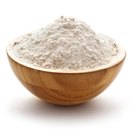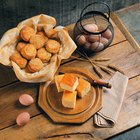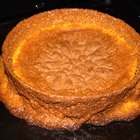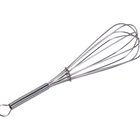
noemosu/iStock/Getty Images
Until the mid-19th century, most cookbooks were simply lists of ingredients with only superficial instructions for the cook. The assumption was that the reader already knew how to cook or bake and could successfully prepare the recipe as long as the correct ingredients were chosen. Modern recipes don't make that assumption. They provide detailed explanations for crucial steps such as separating the wet and dry ingredients in baking.
Baking as Science
Although baking offers tremendous scope for creative artistry, at its core it is a very precise science. For baked goods to reach their full potential, the ingredients must be mixed in the correct ratios. They also need to be combined correctly for ingredients such as butter, sugar, eggs and flour to fulfil their respective roles. This is why wet and dry ingredients are handled separately for baked goods as diverse as delicate cakes and chewy, artisan-style breads.
Ingredient Dispersion
One of the primary reasons for separating wet and dry ingredients is that they interfere with each other during the mixing stage. If you take flour, sugar, baking powder, salt and spices and drop them in a bowl containing milk and eggs, the ingredients won't be able to mix properly throughout the dough. If you take those same dry ingredients and sift them together before adding them to the wet ingredients, however, they'll be evenly dispersed and create a consistent flavor and texture throughout the finished product. The same holds true for liquid ingredients such as milk, honey and vanilla.
Gluten Development
The very simplest muffin and quick bread recipes direct bakers to mix the wet and dry ingredients in separate bowls, then combine them until just mixed. If they're overworked, the muffins will be tough and dry. That's because too much mixing causes the development of chewy gluten strands in the batter. If the wet and dry ingredients were all measured into the same bowl, rather than separated, the mixing required to combine them adequately would produce a heavy, leathery texture.
Emulsification
Emulsification is the process of mixing dissimilar ingredients. Think of a vinaigrette dressing. When you shake it, the oil and vinegar combine temporarily and then separate. Mayonnaise adds an egg, which allows the two to remain permanently mixed. In baking, batters are also emulsions. The dry ingredients help the fat and wet ingredients to stay mixed, producing a batter with a smooth and even texture. This is why, after you've creamed the butter and sugar with the eggs, most recipes dictate that the wet and dry ingredients be added by turns. This technique helps keep the ingredients maintain a good emulsion.
Related Articles

Can Jiffy Baking Mix Be Substituted As ...
Role of Xanthan Gum in Vegan Baking

What Causes Cupcakes to Fall?

How Is Emulsified Shortening Used in ...

A List of Leavening Agents

What Can I Use as an Egg Substitute ...

Can I Save a Cake if I Added Too Much ...

How to Make Nice Fluffy Pancakes With ...

Why Is Sodium Aluminum Phosphate in ...

Reasons for Cakes Not to Rise

Applesauce as an Egg Substitute for ...

Does It Matter if I Substitute Baking ...

How to Use Shortening Instead of Oil ...

What Is a Stabilizer in Baking?

What if You Forget to Put Eggs Into ...

How to Whisk Flour
Does Humidity Affect Baking Times?

What Can You Use in Place of Egg Yolk ...

What Causes Cupcakes to Be Dry?

How Much Applesauce Do You Substitute ...
References
- The Telegraph: Eliza Acton, My Heroine
- On Food and Cooking: The Science and Lore of the Kitchen; Harold McGee
Writer Bio
Fred Decker is a trained chef and prolific freelance writer. In previous careers, he sold insurance and mutual funds, and was a longtime retailer. He was educated at Memorial University of Newfoundland and the Northern Alberta Institute of Technology. His articles have appeared on numerous home and garden sites including GoneOutdoors, TheNest and eHow.
Photo Credits
noemosu/iStock/Getty Images